INTRODUCTION
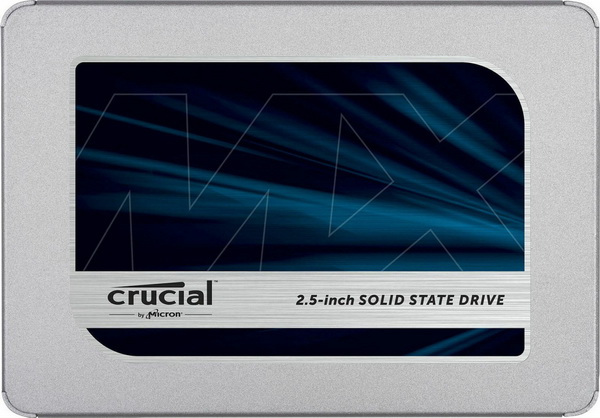
Even though it's clear by today's standards that M.2 NVMe SSD drives are ideal for OS installation (primary) and 2.5" SATA 6Gb/s SSD drives are meant more as backup (secondary) size is a very significant factor for both which sometimes people tend to overlook. For example, even an 500GB primary drive should be more than sufficient to store your OS (with any programs you might want to have) but for a secondary drive (whether that's for backup purposes or game installation) even 1TB is not nearly enough for most people. This is also what some of you said for both my last 2.5" SATA 6Gb/s SSD reviews and so since i always want to cover all segments of the market today i decided to take a look at an old "friend" which has made it all the way to 4TB in capacity, the MX500 by Crucial.
Crucial is a global brand of Micron Technology, Inc. Crucial solid-state drives (SSDs) and memory (DRAM) upgrades are compatible with over 100,000 new and old desktops, laptops, workstations and servers. Crucial Ballistix memory delivers a performance edge to gamers, enthusiasts and power users. Available worldwide at leading retail and e-tail stores, commercial resellers and system integrators, Crucial products enhance system performance and user productivity. Learn more at crucial.com.
I actually reviewed the 500GB variant from the MX500 line back in early 2018 (thus the old friend remark - review here) so seeing that Crucial has made it available in 4TB (aside the 250GB/500GB/1TB/2TB capacities available even back then) was a nice surprise. Unlike its predecessors however the MX500 4TB is not only based on Micron's 96-layer 3D TLC NAND flash (instead of 64-layer) it's also paired with the newer SM2259 quad-channel (8 CE) NAND controller by Silicon Motion (instead of the SM2258) and a 512MB DDR3L DRAM module (1866MHz) again by Micron. The SM2259 quad-channel NAND flash controller supports numerous technologies including NANDXtend (error-correcting with data protection), Static Data Refresh (ensures data integrity), Direct-to-TLC and SLC Caching (algorithms for optimal sustained performance), global wear leveling (algorithm which evens program/erase count and extends SSD lifespan), DevSleep (device sleep - power save), S.M.A.R.T, TRIM, NCQ, partial power loss protection, TCG Opal and hardware AES 256bit encryption. Finally, just like all the other members in the MX500 family the 4TB variant is covered with a 5 year limited warranty and features an MTBF (MTTF) of up to 1.8 million hours and a TBW of 1000TB.
SPECIFICATIONS AND FEATURES

PACKAGING AND CONTENTS
The MX500 4TB SSD arrived inside a small box that has a large product picture at the front along with the company logo, drive capacity and form factor.
Bundle contents and contact information for Crucial are printed at the rear.
Inside the box you will find the MX500 SSD, 7mm to 9.5mm plastic adapter/spacer and the installation instructions.
THE MX500 4TB
The MX500 4TB uses an aluminum housing that has an large sticker at the top with the two letters of the line.
A smaller sticker placed at the base of the drive contains various details including the installed firmware version, product part and serial numbers, interface and country of assembly.
The typical SATA III data and power connectors are located at the rear.
Just like with past models the enclosure is held in place with tiny screws so it's very easy to access the interior.
This side of the PCB only has two Micron 3D TLC NAND flash modules.
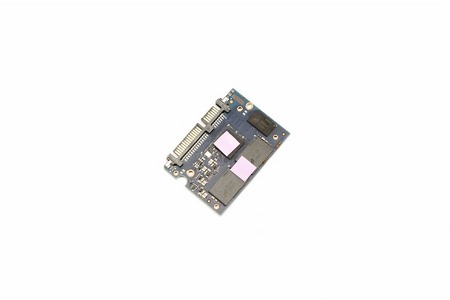
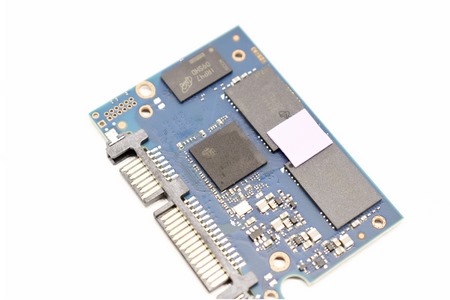
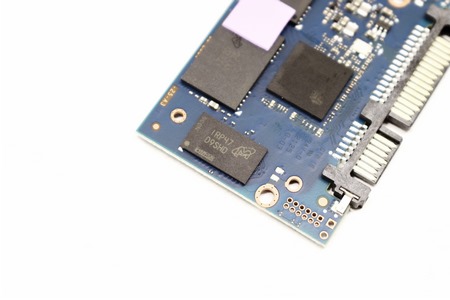 Turning the PCB around we find the Silicon Motion SM2259 quad-channel controller, 512MB DDR3L SDRAM module by Micron and two more 3D TLC NAND flash modules again by Micron.
Turning the PCB around we find the Silicon Motion SM2259 quad-channel controller, 512MB DDR3L SDRAM module by Micron and two more 3D TLC NAND flash modules again by Micron.
TEST BED
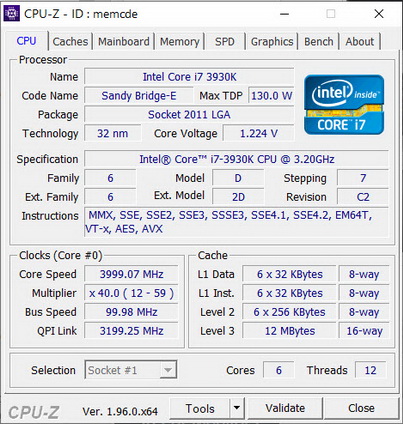

TESTING METHODOLOGY
After over 13 years of testing solid state drives, I’ve concluded that it's almost impossible for any single benchmark suite to accurately measure their performance and that's why in certain benchmark suites we see amazing read/write performance numbers with some drives while in others things are quite different. The reason behind this is that some benchmarking suites are configured to read and write random chunks of data while others read and write constant (sequential) ones. So that's why i always use a very wide selection of benchmarking suites including AIDA64, HD Tach RW, HD Tune Pro, Crystal Disk Mark, Sisoftware Sandra Pro, AS SSD, IOmeter and ATTO. To get the most accurate results each test gets repeated a total of 6 times with the average performance numbers recorded into our charts*. Also, as of February 25th 2015 our results will also include the Storage Networking Industry Association’s (SNIA) IOMeter tests. These tests include a 12 Hour write test used to “simulate” performance degradation over time and a mixed workload test which basically shows what you can expect when using an SSD continuously for roughly two hours. Unfortunately, due to the time required for these tests we repeat them a total of 3 times and not 6 as the above.
Many people have made inquiries about the charts in the past so once again please do keep in mind that the Charts have the average performance numbers of each drive recorded and not the peak (highest) ones. Also, although every single one of these programs can help potential buyers choose the right drive for their needs you should also remember that from any kind of benchmark up to real world usage the gap is not small (and usually most differences will go unnoticed by most people). All tests were performed in a fresh Windows 10 Pro x64 installation with every update installed up to the date of this review.
* Since November 2018 the SSD comparison charts have been divided to 2.5” and M.2 models to reduce their growing size.
TEST RESULTS - AIDA64 / ATTO


TEST RESULTS - HD TACH RW / HD TUNE PRO


TEST RESULTS - SISOFTWARE SANDRA PRO / CRYSTAL DISK MARK
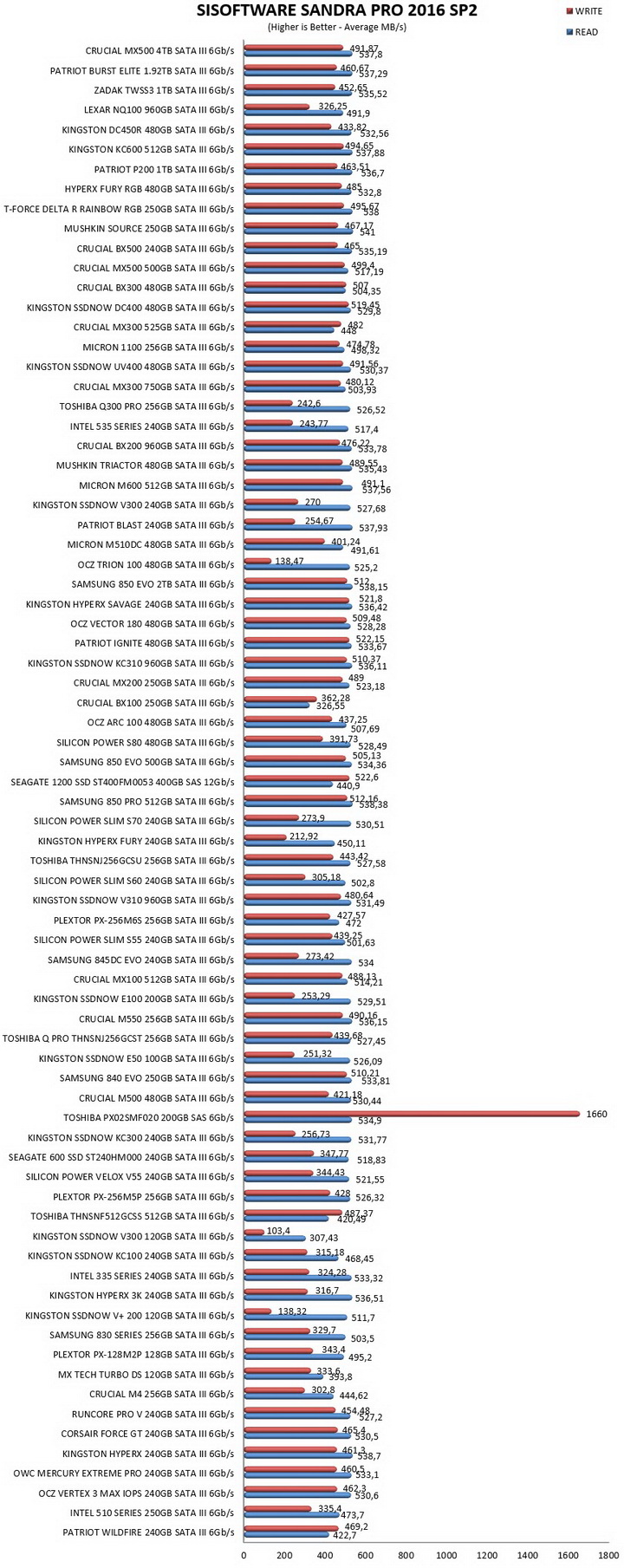

TEST RESULTS - AS SSD / IOMETER

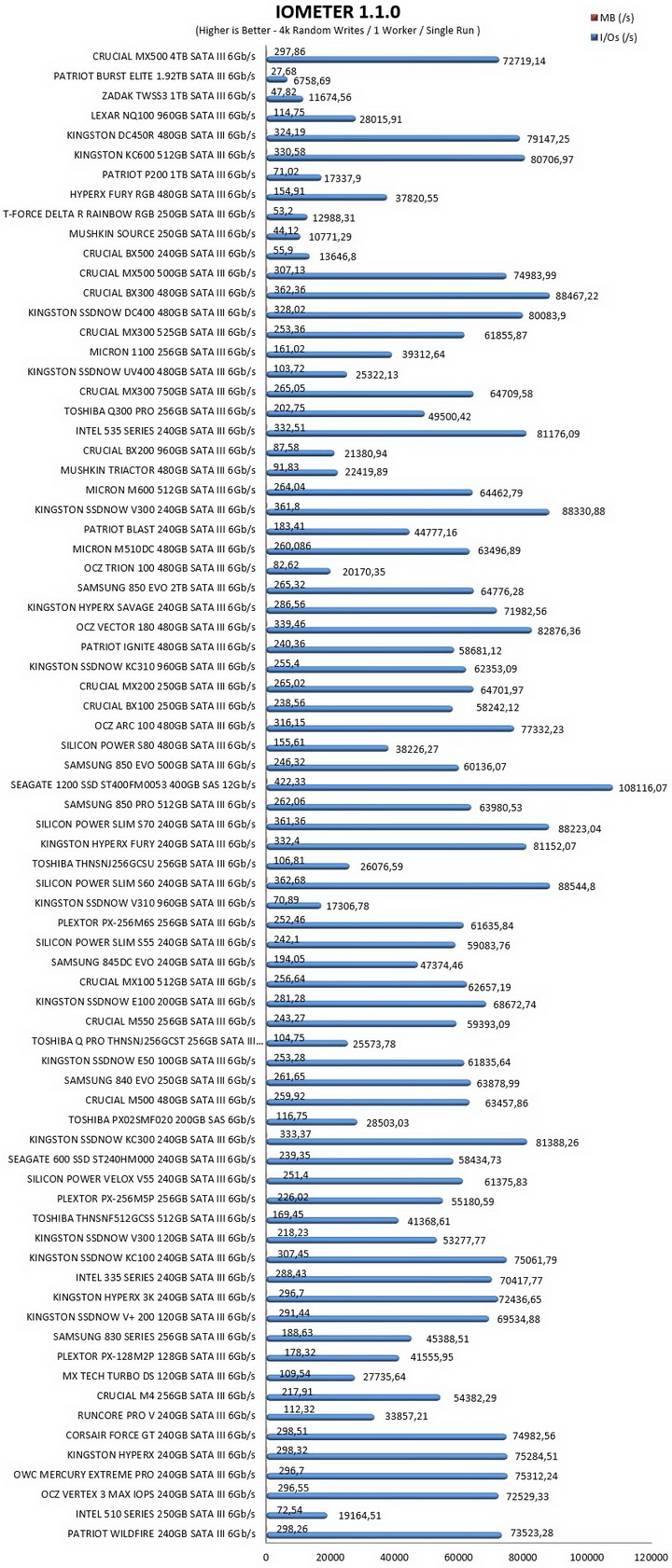
TEST RESULTS - IOMETER SNIA
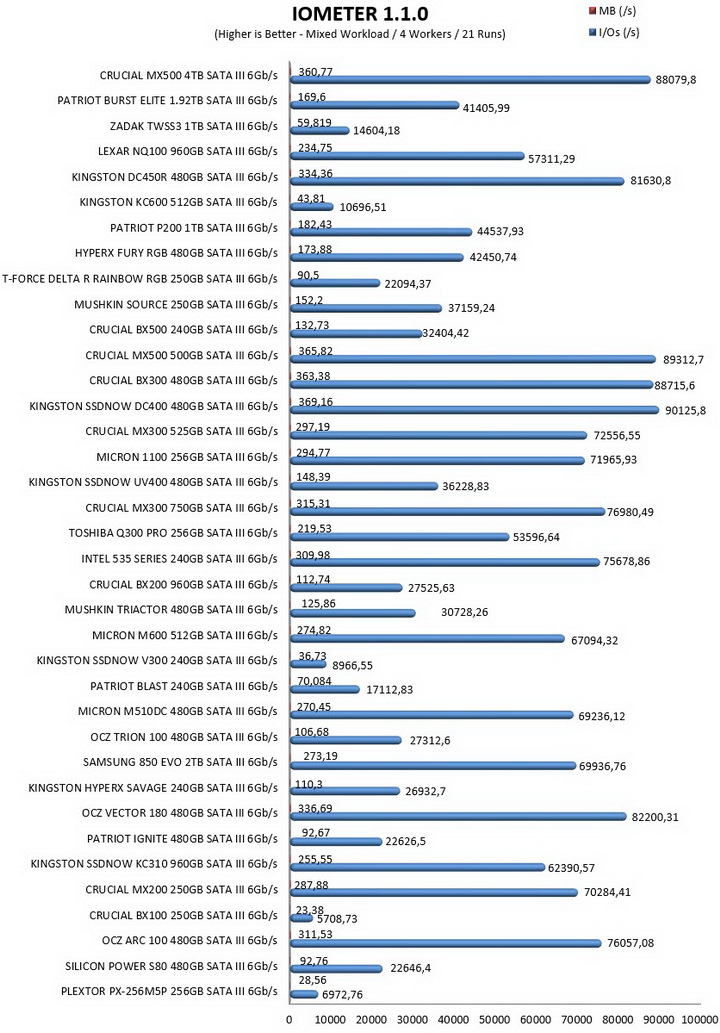
CONCLUSION
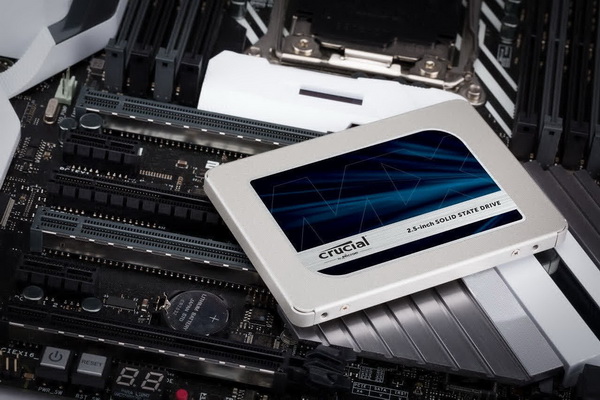
Capacity has always been the Achilles heel of SSDs but the somewhat recent appearance of 4TB and 8TB models has given consumers and professionals alike more options with which to cover their needs. Yes, 2.5” SATA III drives like the MX500 4TB may seriously fall back in terms of performance compared to M.2 NVMe models but they are more than enough for certain uses such as for backup and even as game drives. Unfortunately, Crucial has yet to release an 8TB SSD drive (in any format) but i imagine this is something they will have to do sooner or later in order to compete with the ones that already have. As for performance well not much to say here since the MX500 4TB performs pretty much on par with other recently reviewed 2.5” SATA III drives. I do however consider a slight drawback the limited amount (512MB) of DRAM Crucial has used with this 4TB variant (1-2GB would further improve drive performance).
Currently retailing for USD359.99 inside the USA (Amazon.com) and for 364.75Euros inside the EU (Amazon.de) the MX500 4TB 2.5” SATA III SSD by Micron may be priced just a tad higher compared to same capacity solutions by the competition but that’s far from a game breaker. At the end of the day the Crucial MX500 4TB may not impress with its performance (just like any other 2.5” SATA III drive) but thanks to its capacity, features and 5-year limited warranty it does deserve the Golden Award.

PROS
- Very Good Overall Performance
- Features
- Capacity (4TB)
- Endurance Numbers (2 million Hours MTBF / 1000TBW)
- 5 Year Limited Warranty
CONS
- DRAM Amount

 O-Sense
O-Sense





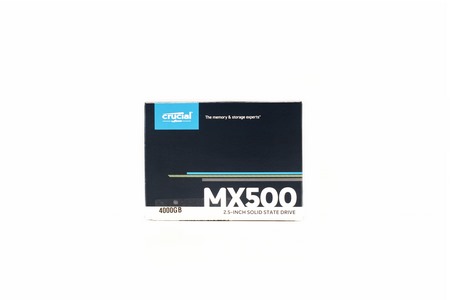
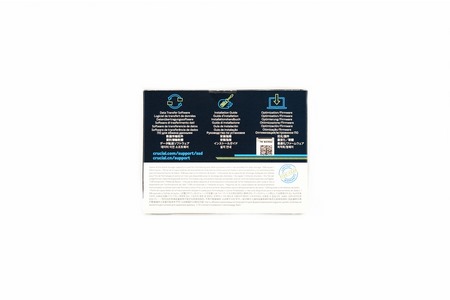
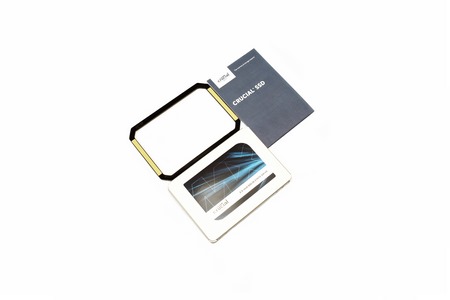
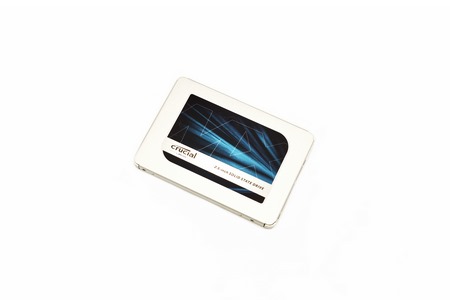
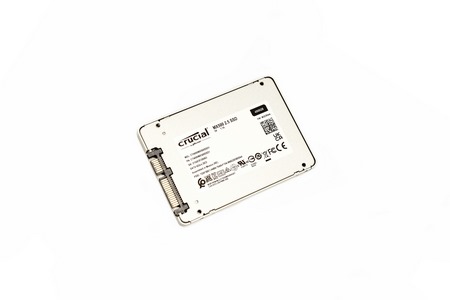
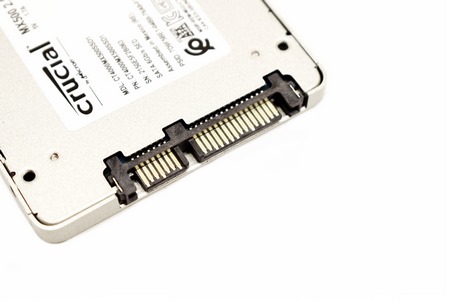
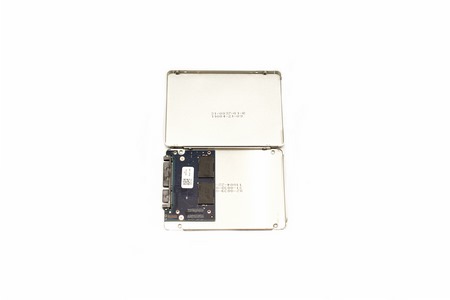
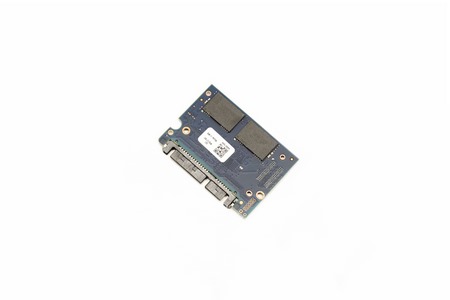
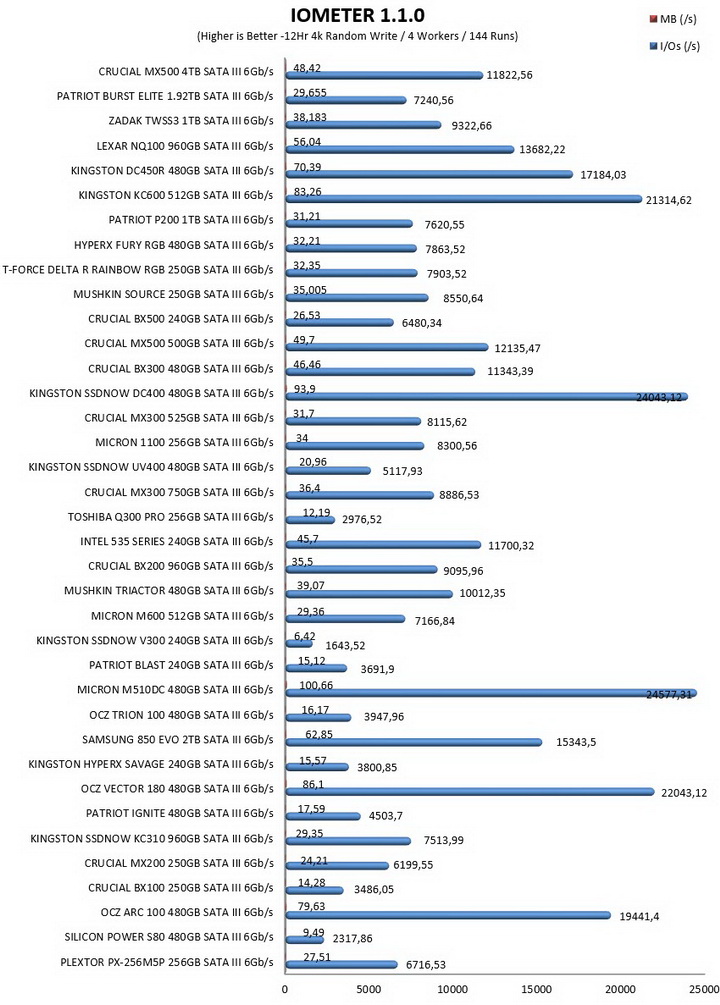
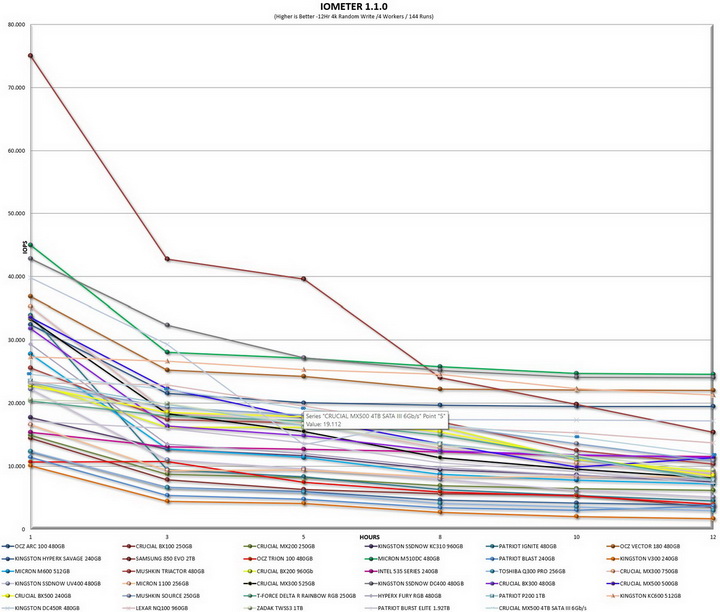


.png)

